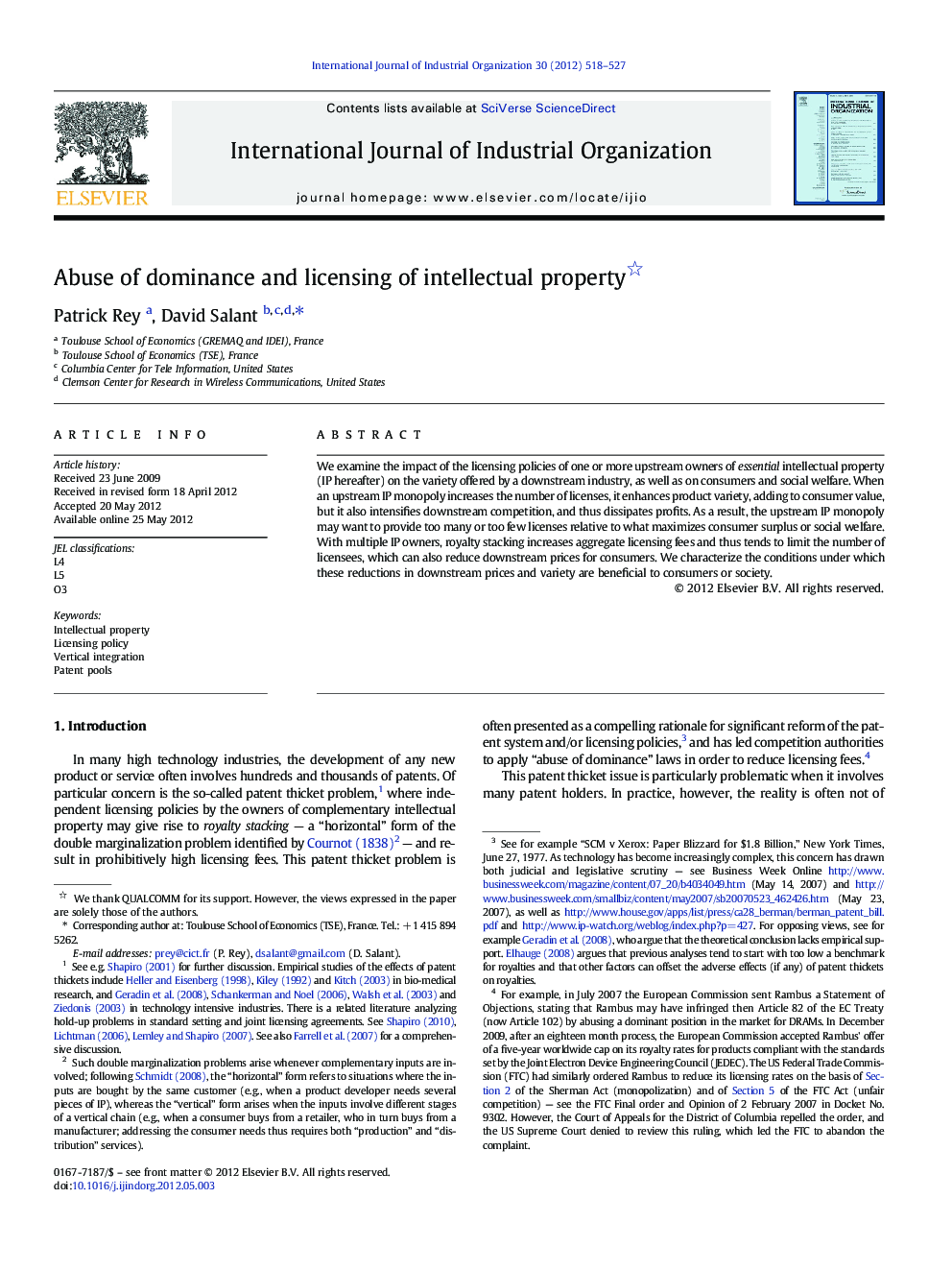| کد مقاله | کد نشریه | سال انتشار | مقاله انگلیسی | نسخه تمام متن |
|---|---|---|---|---|
| 5078025 | 1477331 | 2012 | 10 صفحه PDF | دانلود رایگان |

We examine the impact of the licensing policies of one or more upstream owners of essential intellectual property (IP hereafter) on the variety offered by a downstream industry, as well as on consumers and social welfare. When an upstream IP monopoly increases the number of licenses, it enhances product variety, adding to consumer value, but it also intensifies downstream competition, and thus dissipates profits. As a result, the upstream IP monopoly may want to provide too many or too few licenses relative to what maximizes consumer surplus or social welfare.With multiple IP owners, royalty stacking increases aggregate licensing fees and thus tends to limit the number of licensees, which can also reduce downstream prices for consumers. We characterize the conditions under which these reductions in downstream prices and variety are beneficial to consumers or society.
⺠We model licensing policies of upstream owners of essential intellectual property. ⺠We examine impact of IP licensing policies on consumers and social welfare. ⺠Multiple owners of essential IP tends to limit downstream variety. ⺠Royalty stacking can reduce downstream prices for consumers. ⺠We characterize when this reduction in downstream prices and variety is beneficial.
Journal: International Journal of Industrial Organization - Volume 30, Issue 6, November 2012, Pages 518-527